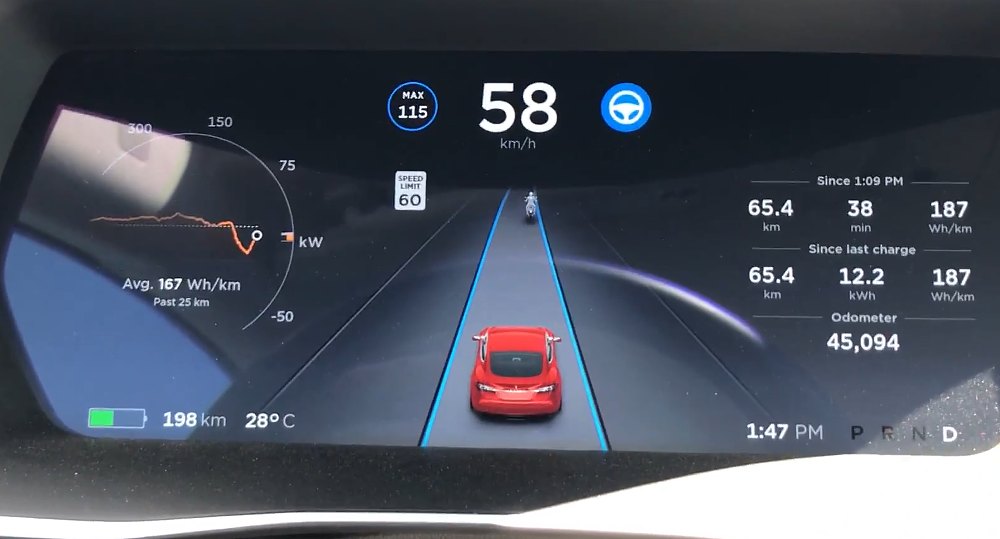Whether it’s a chase scene in a movie or a race on TV in the background of a sports bar, it’s easy to assume that riding a motorcycle at speed is difficult. And it is, though maybe not for the reasons people think.
As someone who has attempted for many years to pilot a motorcycle through obstacles or around corners at high speed, I can tell you that it is, in fact, demanding. Physically, sure, but that’s not really what makes riding hard to do. Any motorcyclist, especially one who has entered a turn going faster than they meant to, knows the challenge well. The feeling of tension, when our brain is overwhelmed by the situation and panic starts to set in, is perilous.
That moment alone is interesting, because overwhelming the human brain is a feat in itself. Our brains have massive computing power and in some ways have advantages over actual computers — most notably, for the number of steps in a process it can calculate or initiate in parallel. Processing things in parallel helps when piloting a motorcycle, but what I was specifically curious about was why riding a fast motorcycle at high speed seems so much more difficult than riding a slow one? Instead of leaning on only the feelings we have in these scenarios to digest the many factors that make this activity difficult, I aimed to dive deeper into some of the math and science behind riding a fast bike versus a slow bike.
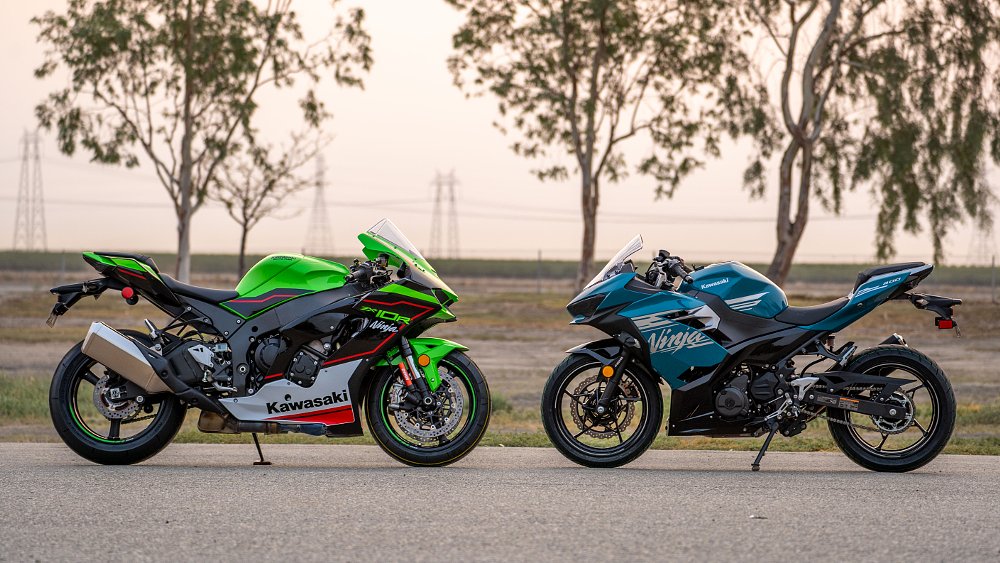
To be inescapably clear, I am not historically good at math or science. Never have been. Fortunately, gathering the basic data was right in my wheelhouse. I took two Kawasaki Ninja sport bikes as my surrogates for “fast” and “slow” — a ZX-10R and a Ninja 400, respectively — to Buttonwillow Raceway in California. With a video camera mounted in the cockpit to monitor displayed speed and track position, I timed how long certain sectors of the track took on each bike. Then, the data was broken down into segments of acceleration, deceleration, and turning. With that information, periods of intense brain focus could be inferred, and calculated, to map a route between riding sensations and raw numbers.
The numbers
Over the course of any given lap, the ZX-10R was faster in every measurable category — its lap time was around 15 seconds quicker and maximum speed about 40 mph higher — none of which is surprising. Compared to the Ninja 400, the ZX-10R’s 999 cc engine is two and a half times larger and offers four times the horsepower, while the whole machine is only about 23 percent heavier with a full fuel tank.
Data started to take on more intriguing shapes when they were culled down to focus on how much time was spent on the throttle, on the brakes, and going through corners. For example, over the course of a 1:56.7-second lap, the ZX-10R’s throttle was wide open for approximately 25 seconds, or 21 percent of the lap. The Ninja 400’s lap of 2:11.2 saw the throttle wide open for around 70 seconds, a whopping 53 percent of the total lap. Braking showed an inverse relationship of those numbers, though not as extreme.
For most of us who love riding motorcycles, though, it’s the time between the straightaways and braking zones that really lights our fire. Mapping how much brain power is used to get through a corner is tricky, but one piece of data proved particularly useful — the time spent with the throttle open, but not all the way. For the sake of this test I called it “controlling throttle.” Anyone who has ridden a motorcycle around a racetrack knows that applying too much (or too little) throttle in the middle of a corner can unsettle the bike or even lead to a crash, and therefore controlling how much power gets to the rear wheel is both crucial and mentally consuming.
Because the ZX-10R has so much more horsepower on tap, modulating the delivery of that power takes more time. As an example, despite the shorter overall lap time, I spent around 50 seconds of each lap in controlling-throttle situations on the ZX-10. On the slower Ninja 400, it was about 26 seconds. This is significant because the throttle being fully open is a signal that the decision of how much power to use is over, which means at least one string of decisions being made is complete. Halving the amount of time spent regulating the machine’s power is a good indicator of how much less brain power was used.
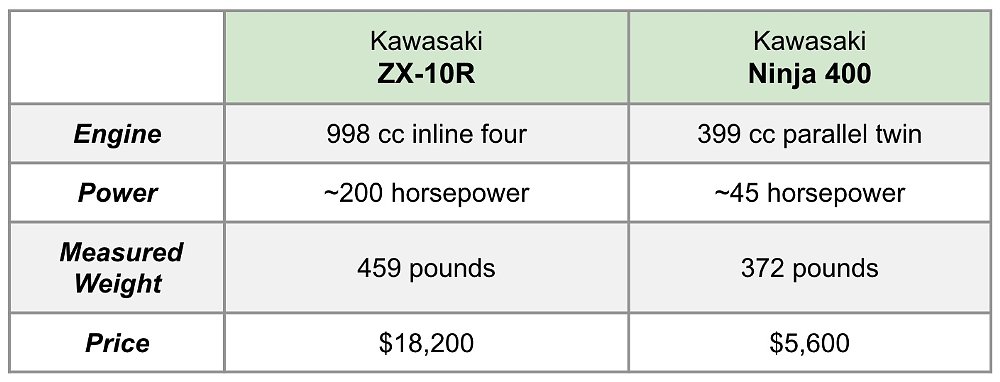
One last major result of this extra bandwidth in my brain was precision in lines. I have often noticed that the slower the machine I’m riding or racing, the easier it is for me to hit the exact lines on the track and therefore maximize my preferred lap. Testing these two bikes back to back made the struggle extremely clear. Riding the Ninja 400, I was able to put the tires in the same spot each lap, if necessary within a few inches of the edge of the track, and be confident that I was under control. On the 200-horsepower ZX-10R, I tried my hardest to mimic the same consistency and precision but often I failed, meaning I didn’t use the ideal racing line and therefore was further from a relatively “good” lap time.
It’s worth mentioning that the way this research was conducted was pretty casual. The data captured and presented was done so by mapping GoPro footage, not a professional-grade accelerometer with GPS and data-acquisition equipment linked to the bikes. Most of all, this test is meant to represent more of the data that is available visually, because it is one step closer to what we all feel when we ride.
The science behind the visor
Dissecting the segments of a lap and discussing how each piece is challenging is valuable for understanding why we motorcyclists feel the way we do when we ride at speed. But, the root cause of feeling more overwhelmed on a “fast” bike was still buried. In other words, why? What is happening in the brain that dulls our senses and keeps us from navigating the same curves the same way on a faster bike? Some of this has to do with basic visual processing.
To paraphrase the National Eye Institute in describing how our eyes work, the light-sensitive layer at the back of the eye (the retina) captures the environment in front of us and then transfers that image, as electrical signals, to the brain. An important concept to understand as it pertains to riding a motorcycle is called “optic flow.” Unlike being stationary and having an object move toward us, when we are the object moving through an environment our entire visual field is in motion and the image “flows” over our eye, seeming to move faster at the edges and slower in the middle.
In 2015, three scientists at the Norwegian University of Science and Technology in Trondheim, Norway, published “A high-density EEG study of differences between three high speeds of simulated forward motion from optic flow in adult participants.” Basically translated: How does it seem the brain processes forward motion? By measuring and graphing the information gathered by the study’s participants at three different simulated speeds (25, 50, and 75 kph), data showed that as speed increased, the brain’s latency increased and amplitude decreased. In other words, the faster we move through an environment, the less information we get and the longer it takes to process.
Being that the highest simulated speed shown to the participants of this study was 46.6 mph, an obvious question for a motorcyclist would be whether or not the data offer insight into riding at two or three times that speed. One of the study’s authors in Norway, Dr. Audrey van der Meer, offered some insight. “Yes,” she said, “I think it would be fair to expect longer latencies with even higher speeds. High driving speeds are more complex and therefore more difficult for humans to perceive, resulting in longer processing times.”
Some of it is fairly simple math. The study shows approximately 50 milliseconds longer latency (delay) when the simulated speed increased from 15.5 mph to 46.6 mph. If we extrapolate that data by tripling the speed again and account for another 50-millisecond delay, that would result in a 100-millisecond (0.1 seconds) delay between information processed at 15.5 mph versus 140 mph. That means that at 140 mph (or 205 feet per second) around 20 feet of racetrack passes under the motorcycle in the amount of time it takes the neurons in an average human brain to transmit the visual information it’s taking in. This is conjecture, probably beyond the scope of what any of the doctors would state, but it makes me feel better about not being able to be as precise with my lines on the faster machine.
The study does go so far as to conclude that the findings have implications for traffic safety, considering that people don’t respond as quickly when speeds increase — that applies to the challenges of riding a motorcycle at speed, to put it mildly. Another curious snippet of the study’s closing discussion states, “with fewer neurons attuned to higher visual speeds, the motion sensitive areas of the adult brain appear to be less attuned to relatively high motion speeds of up to 75 km/h [46.6 mph].”
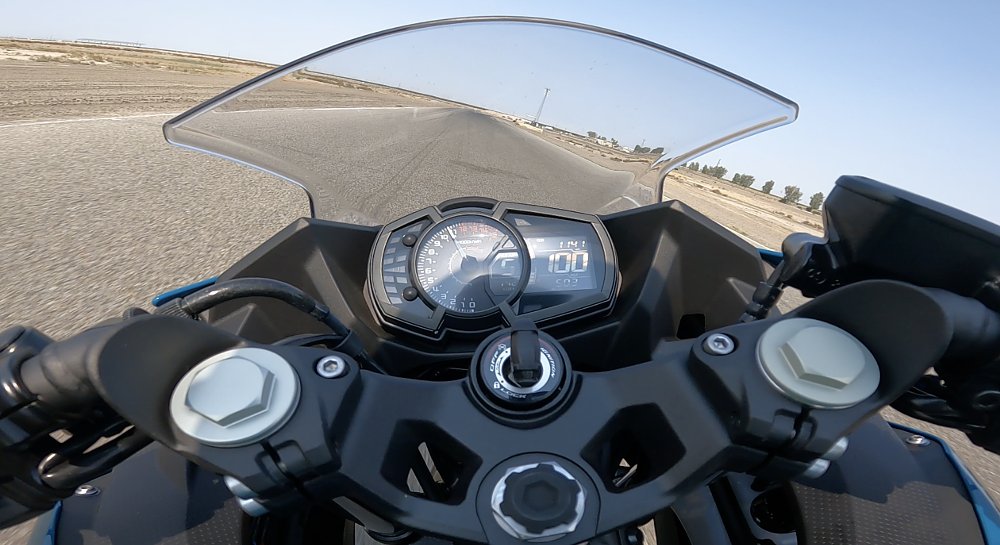
Essentially, as the brain tries to process higher speed (faster optic flow) it has a smaller percentage of its total power that is usable. But, as a person who tests motorcycles, and who is historically bad at math and science, this only led to more questions. Among them: How do neurons work? Why does the brain limit aptitude to certain speeds of optic flow? Is there any way to strengthen our brains to be better at this activity?
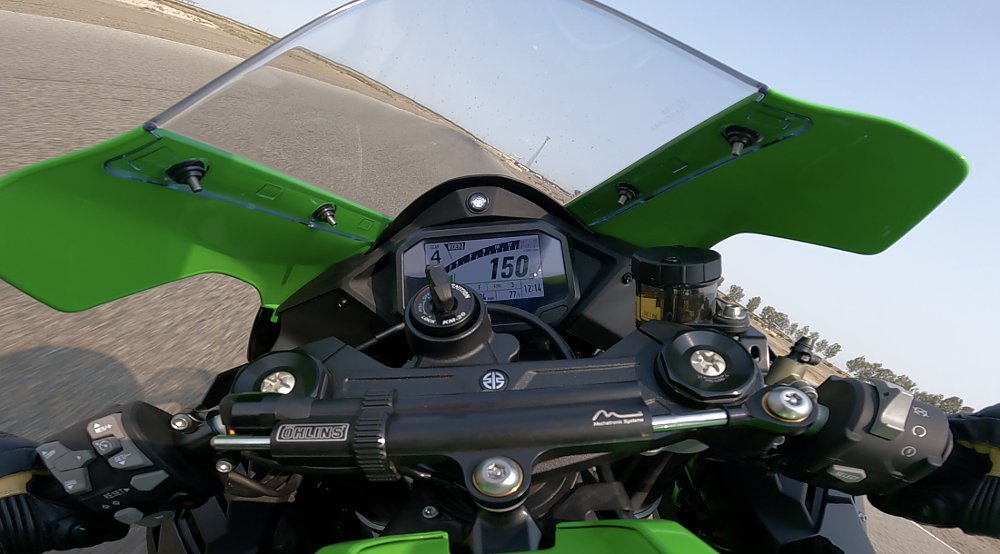
Dr. Cary Feria is an associate professor of psychology at San Jose State University whose interests have focused on visual perception and visual cognition, and she weighed in on how all of this might affect riding a motorcycle at speed. She started with the basic explanation of neurons as information messengers in the brain and moved on to more complex nuances of our cognitive strengths and weaknesses.
“Each neuron would have a certain speed or range of speeds that it is best at picking up,” said Dr. Feria. “Some neurons are going to be best at picking up slower speeds, some neurons will be best at picking up really fast speeds.” The Norwegian study and its discussion suggested that there are more neurons in the average human brain that were attuned to the lower speeds and fewer neurons adept at handling faster speeds.
To Dr. Feria, this makes sense. “Our brain develops according to the experience we have, the visual stimulation we get,” she said. To zoom out on that concept, we humans don’t spend very much time going fast and therefore our brains don’t build as much structure to support processing the world passing by at high speed. Dr. van der Meer took it a step further, pointing out that on an evolutionary scale people have not had access to high speeds for very long and therefore relatively few neurons would be specialized to process it.
As for the last question of how to get better at it, the answer is simple and at least a little bit controversial: Do it more and start early. Research has shown that our brain has an ability to develop, to create connections and develop neurons based on what we are seeing, particularly when we’re young. As we get older, our brain does not have as much of that ability. So, the good news is that it seems we motorcyclists can always get better by practicing. Then again, starting young has its own issues, which Mark Gardiner has written about on Common Tread.
What it all means
It’s satisfying to learn that the question of why we feel overwhelmed by speed has a clear answer, or at least some strong theories that are backed by research. Human brains have only been able to learn how to visually process high speeds for a tiny fraction of our existence, and if it’s not something we focus on while we’re still in development it likely becomes more difficult for us to adapt. Setting aside the limits of evolutionary science, it makes perfect sense that as speed increases our cognitive ability decreases.
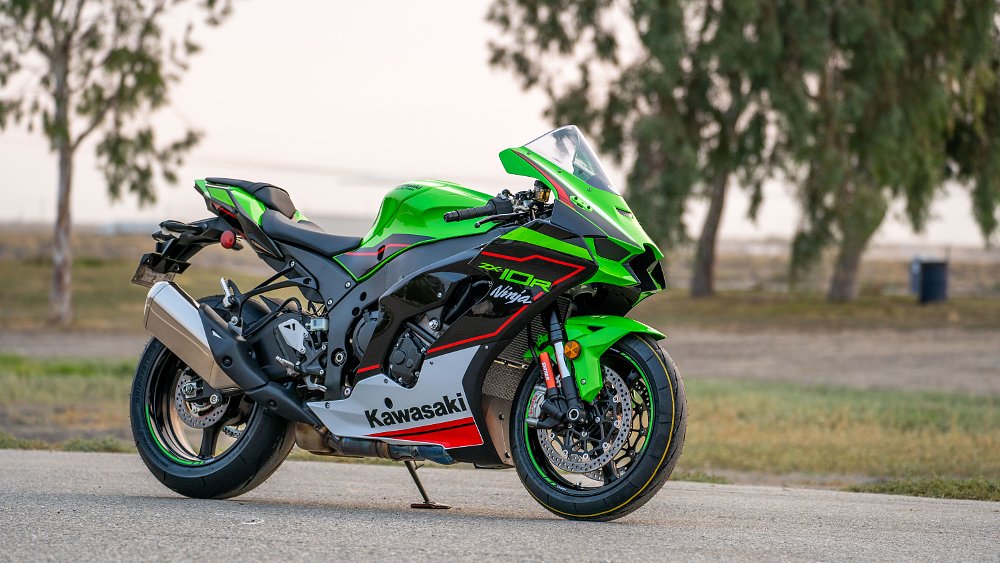
Think of it like preparing scrambled eggs. Under normal circumstances, in a warm kitchen on a quiet weekend morning, the steps are clear and the eggs will come out just fine. Now imagine cooking those same eggs in the same pan on the same stove, during a 15-minute earthquake. The eggs are more likely to be overcooked, or undercooked, or otherwise worse, and it’s not because any ingredient has changed.
The distraction of hearing things falling off shelves in the other room, the pan sliding back and forth across the stove, and the carton of eggs scooting toward the edge of the counter threatening to jump would be enough to make the activity more difficult. Cooking eggs in an earthquake is like riding a 1,000 cc sport bike as fast as you can. There isn’t anything different about the activity of going through corners, but it is accompanied on either side of the corner by a rush of acceleration and deceleration that leaves less headspace and cognitive bandwidth available compared to a normal or “slow” motorcycle.
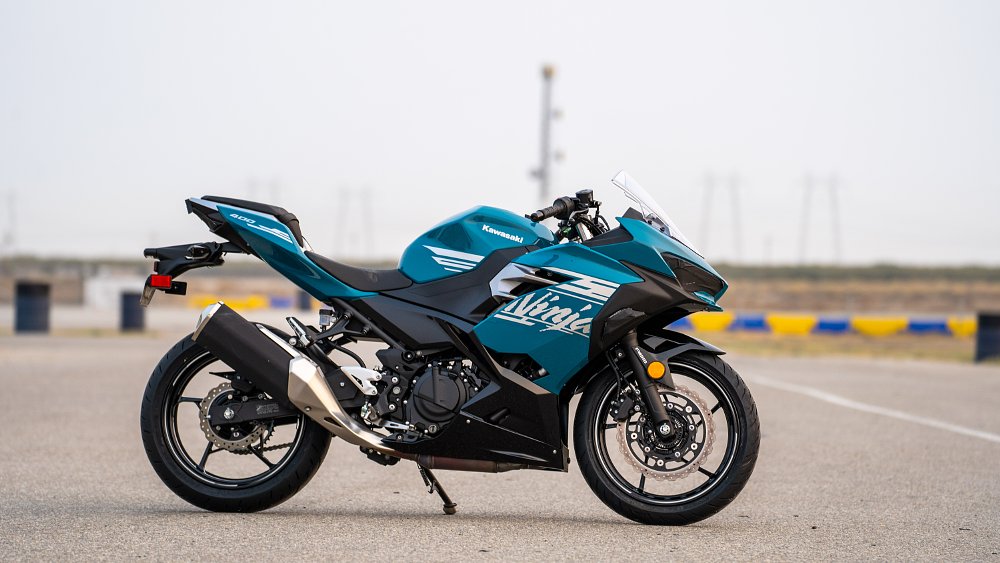
It’s also important to recognize that how overloaded each person’s mind becomes is subjective. I feel composed and calm on a Ninja 400 with 45 horsepower but I feel relatively overwhelmed on a ZX-10R with 200 horsepower. That transition in machines represents crossing some fringe of my personal ability and cognitive power. Someone who doesn’t ride motorcycles might be completely blown away by a “slow” motorcycle, while a MotoGP racer would probably find the “fast” pace in this test about as stressful as preparing a normal, non-earthquake breakfast.
Ultimately, what our brains can read and how quickly our bodies can react while riding is phenomenal. Twisting the grip is the easy part. We read the environment, instigate physical responses in parallel, and recall the skills we’ve learned, all in the blink of an eye. At least, as long as we don’t think about it too much.











